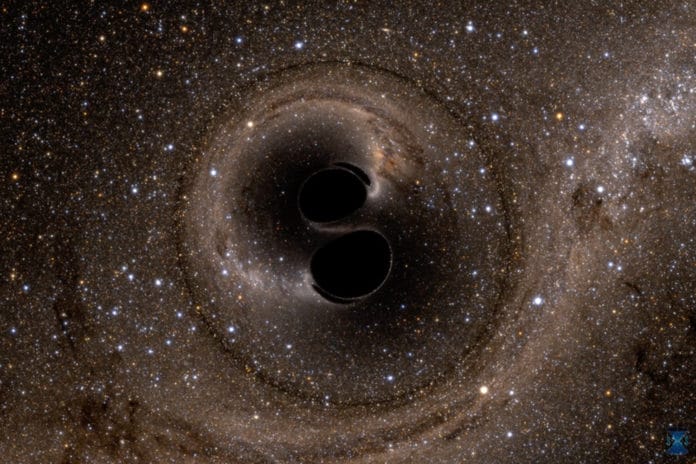According to Stephen Hawking’s black hole theory, the area of black hole’s event horizons should never shrink. This theory reinforced a series of fundamental insights about black hole mechanics.
This black hole law predicted by Stephen Hawking was quite similar to the second law of thermodynamics-the entropy, or degree of disorder within an object, should also never decrease.
The similarity in both theories suggested that black holes could behave as thermal, heat-emitting objects. In 1974, Hawking showed that black holes could have entropy- if considering their quantum effects, black holes can radiate for very long timescales.
Scientists dubbed this phenomenon Hawking radiation.
It all begins with Stephen Hawking’s theory on black holes: the total area of the black hole event horizon can never go down.
However, this area theorem works out mathematically, but scientists had not found any way to detect it against nature until LIGO’s first detection of gravitational waves.
At the time, researchers could not pick out the necessary information within the signal, before and after the merger, to determine whether the final horizon area did not decrease, as Hawking’s theorem would assume.
In 2019, Maximiliano Isi, a NASA Einstein Postdoctoral Fellow in MIT’s Kavli Institute for Astrophysics and Space Research, and his colleague developed a technique to extract the reverberations immediately following GW150914’s peak — the moment when the two-parent black holes collided to form a new black hole.
Now, almost fifty years later, physicists at MIT and elsewhere have now confirmed Hawking’s area theorem for the first time. They took a closer look at GW150914, the first gravitational wave signal detected by the Laser Interferometer Gravitational-wave Observatory (LIGO), in 2015.
GW150914 is the first gravitational wave signal resulting from the collision of two black holes that generated a new baby black hole with lots of energy. Scientists reanalyzed the signal from GW150914 before and after the cosmic collision and found that the total event horizon area did not decrease after the merger.
Isi said, “There may be a zoo of different compact objects, and while some of them are the black holes that follow Einstein and Hawking’s laws, others may be slightly different beasts. So, it’s not like you do this test once, and it’s over. You do this once, and it’s the beginning.”
Using a newly developed model, scientists identified the mass and spin of both black holes before they merged. They calculated their total horizon areas from these estimates — an estimate roughly equal to about 235,000 square kilometers.
Isi said, “The data show with overwhelming confidence that the horizon area increased after the merger, and that the area law is satisfied with very high probability. It was a relief that our result does agree with the paradigm that we expect, and does confirm our understanding of these complicated black hole mergers.”
Scientists are now planning to test Hawking’s area theorem and other longstanding theories of black hole mechanics, using data from LIGO and Virgo, its counterpart in Italy.
Journal Reference:
- Maximiliano Isi et al. Testing the black-hole area law with GW150914. (Physical Review Letters)
